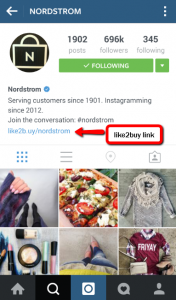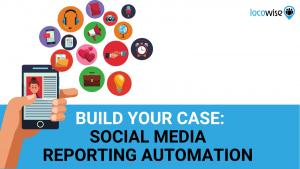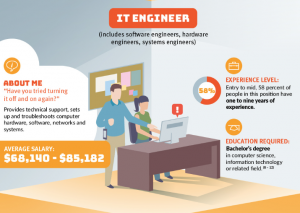How do you compete against the ‘big boys’ in programmatic? Contributor Kevin Lee discusses where large marketers have an advantage and what you can do to level the playing field.
 First, I’d like to thank Danny Sullivan, Pamela Parker and the Third Door Media team for giving me the privilege of sharing my expertise, wisdom and opinions with you. This is my first Marketing Land column, but I’ve written more than 500 columns over nearly 20 years, as well as four books, plus a lot of speaking at conferences, so you may already know me and my areas of interest (which are quite diverse).
First, I’d like to thank Danny Sullivan, Pamela Parker and the Third Door Media team for giving me the privilege of sharing my expertise, wisdom and opinions with you. This is my first Marketing Land column, but I’ve written more than 500 columns over nearly 20 years, as well as four books, plus a lot of speaking at conferences, so you may already know me and my areas of interest (which are quite diverse).I hope to keep you learning, thinking and improving so you can hit marketing home runs and get the raises and promotions you deserve. So here we go…
Large marketers have significant advantages in the world of programmatic display, video and native. Let’s review some of the areas where — as a midsized marketer — you may find competing with the “big boys” a challenge. (Alternately, you may be a large marketer getting your lunch eaten by another large marketer — this advice applies to you as well.)
Access to the latest ad tech and martech
Large marketers typically use agencies with access to the latest ad tech and martech stacks, and often, their own programmatic trading desks. These technologies include features and functionality that are difficult to replicate using the AdWords Google Display Network (the display channel choice of many smaller and midsized marketers).
To level the playing field as an agency, consider partnering with a shop that already has access to the technology you need, particularly if the minimum fees for using that technology are high.
As a marketer, consider those same midsized agencies that handle both large and small clients, because their larger clients spend enough to make use of the platforms they need more viable. You get to “go along for the ride,” and your agency account and media teams get access to the technology you’ll need to compete.
Bigger marketers have bigger data
Large marketers have bigger data — assuming they can find out how to store and analyze it all. Oftentimes, big marketers get in their own way due to legacy BI (business intelligence) and CRM (customer relationship management) systems not playing well with other systems.
Data is power. The more intelligence the programmatic bidder at the DSP (demand-side platform) has to make decisions on bids, the more accurate it will be in setting bids: not too high and not too low. Data powers a “Goldilocks” bidding strategy: just the right bid in all forms of auctioned media, including search, social and display/video/audio.
In search (PPC) and all forms of programmatic buying, having imperfect information has negative implications. Smaller marketers and those with bad data (or in a “data vacuum”) are often the victims of the “Winner’s Curse” in programmatic display/video/native or PPC search/social. (In economics, the “Winner’s Curse” is where a winner overpays in an auction because he or she can’t take the chance of losing.)
Larger marketers have better ad creative and can make frequent updates to it
Better-performing creative empowers the media bidding system to bid more aggressively, if necessary, or delivers a higher profit at the same bids.
While you may not have the resources to create and rotate new creative into your campaigns regularly, there are some things you can do to keep up, including:
- using templated creative, where changing the message or image is easy, but the logo is already there. Consider testing “native” ad units because they can work with lower production values due to where they are displayed (Many native ad units are “image plus text” or “video plus text”); and
- focusing on your power curve. Every marketing channel and nearly every business has this statistical law operating within its product/service mix. If you need creative at the product level, templates are useful. What’s key is focusing on your best sellers and most profitable items (Alternatively, you may have a “loss leader” which predicts additional purchases — immediately or over time — and you can, therefore, bid aggressively on that product or service).
Larger marketers are investing offline
Larger marketers are building awareness and brand, which is then reinforced when programmatic display or video is presented to the consumer/prospect. You may not be able to use offline media at tonnage levels the way big advertisers do, but there are several ways you can improve the odds that those seeing your message are in fact already aware of you, including:
- retargeting;
- Custom Audiences and “Live Ramp”-style audience creation;
- hyper geo-targeting around your physical locations; and
- heavy use of earned media (online and offline) within your target audience. It’s powerful to leverage the “halo effect” that comes with many forms of earned media.
Be nimble with budgets
Marketing departments love predictable budgets because business forecasting is important — not only to the marketing management but also to the CFO and C-suite. But forecasting in auctioned media can be challenging, as the inventory and bid landscape changes every minute, hour and day.
This means that media-buying teams need to be willing to monitor campaigns very closely with ROI, volume and budgets being managed simultaneously. As a smaller business, you need to have the ability to be nimble with budgets in terms of overall size and being able to shift budget to where it works.
I also can’t stress how important it is for you to become comfortable with the ambiguity of programmatic. As more and more media has moved to programmatic, you often don’t know the outcome of your media buy ’til it happens.
Don’t get scared by this: Let it empower you, because the truth is that many big marketing departments often aren’t nimble at all. Sometimes branding and direct response teams barely talk to each other. Midsize marketers are in control of the whole pie, so take advantage of that fact.
Bottom line: If you’re nimble and can leverage the advantages that an agency partner can offer, you can do a lot to neutralize the “large marketer advantage.”
Some opinions expressed in this article may be those of a guest author and not necessarily Marketing Land. Staff authors are listed here.
Marketing Land – Internet Marketing News, Strategies & Tips
(70)
Report Post






